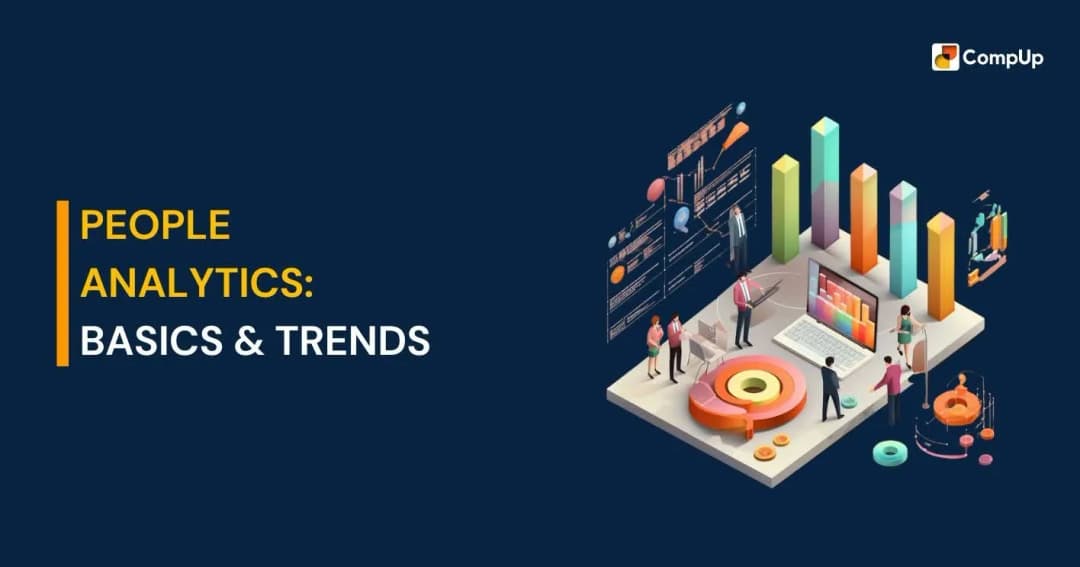
People Analytics has become a game-changer for HR professionals. With organizations increasingly relying on data to make informed decisions, understanding the power of People Analytics is crucial for success. HR teams can uncover insights that drive better recruitment, enhance employee engagement, optimize performance, and reduce turnover.
This essential guide will provide you with everything you need to know to get started with People Analytics. Whether you are a seasoned HR professional or just beginning to explore People Analytics, this guide will help you employ data to improve your organization’s workforce strategy.
People Analytics, also known as workforce analytics or HR analytics, refers to the use of data-driven insights to improve and optimize human resource practices within an organization. It involves collecting, analyzing, and applying data related to employees, teams, and organizational structures to make more informed decisions about talent management, performance, recruitment, and employee engagement.
In contrast to traditional HR practices, which often rely on intuition or anecdotal evidence, People Analytics uses quantitative data to identify trends, predict outcomes, and provide actionable recommendations.
Now that we have introduced people analytics, let’s explore the key benefits it offers.

Effective appraisal planning is essential for aligning compensation with performance. CompUp Webinars | Deep Dive into Appraisal Season explores best practices for optimizing evaluations, ensuring pay equity, and maximizing compensation insights. Watch the webinar to enhance your appraisal strategy and drive workforce success.
People Analytics offers numerous benefits that can transform HR practices, drive better decision-making, and enhance overall organizational performance. Here’s a look at the key benefits of People Analytics for both HR teams and organizations as a whole:
Having explored the benefits of people analytics, let’s look deeper into the different types of people analytics that organizations can use to drive insights and optimize their workforce.
Suggested Read: Understanding What the 75th Percentile Means in Salary Compensation
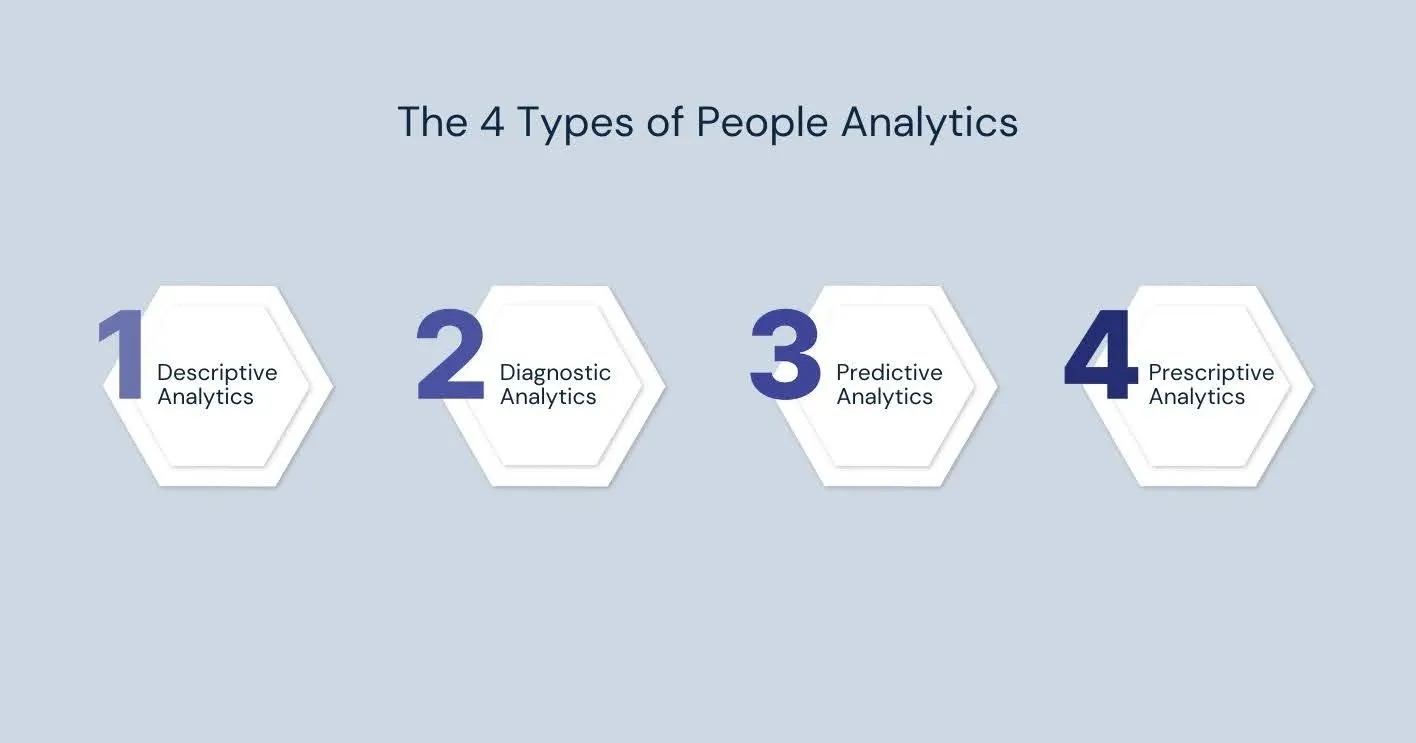
People Analytics can be divided into four distinct types, each focusing on different aspects of employee data and organizational performance. Understanding these types can help HR professionals select the right approach to gather insights and drive better decisions.
Here are the four main types of People Analytics:
Descriptive analytics provides insights into what has already happened within an organization. By analyzing historical data, HR can better understand past performance, trends, and patterns. This type of analytics is particularly useful for reviewing employee turnover, engagement levels, and past recruitment efforts, offering valuable insights into the "why" behind current trends.
Example: Analyzing past employee engagement surveys to identify recurring issues or areas of strength within the company.
Diagnostic analytics goes a step further by helping HR understand why something happened. It involves analyzing data to identify relationships and causal factors behind trends, such as why employee turnover is higher in a particular department or what factors contribute to employee dissatisfaction.
Example: Analyzing exit interview data to diagnose the reasons behind high employee turnover in specific teams or departments.
Predictive analytics uses historical data and statistical models to forecast future trends and behaviors. This type of analytics allows HR teams to anticipate challenges and opportunities, such as predicting which employees might leave the company or which recruitment channels are likely to bring in the best candidates. It helps HR teams make proactive decisions based on data-driven predictions.
Example: Using predictive models to identify employees who are at risk of leaving and taking steps to improve retention before it happens.
Prescriptive analytics provides actionable recommendations based on data insights. It takes predictive analytics a step further by suggesting the best course of action to address potential problems or capitalize on opportunities. In HR, this type of analytics can guide decisions around talent management, learning and development, compensation, and employee engagement.
Example: Recommending specific training programs for employees who are identified as having high potential but lack certain skills, or suggesting interventions for improving employee satisfaction.
The People Analytics Process transforms raw employee insights into actionable strategies, helping HR teams improve decision-making, engagement, and retention. Let’s break down the key steps in this process.
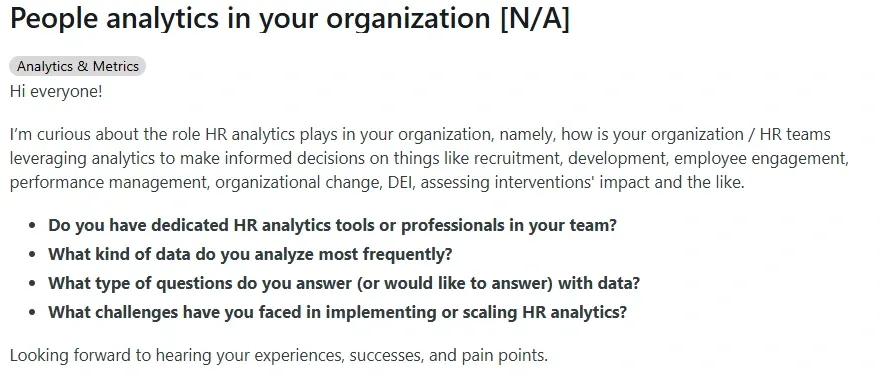
From the Community: Explore how HR analytics enhances decision-making across recruitment, development, DEI, and performance management.
Implementing People Analytics involves a structured process that transforms raw employee data into meaningful insights to drive better HR decisions. This process is essential for organizations looking to make data-backed, strategic moves in talent management, recruitment, performance, and engagement.
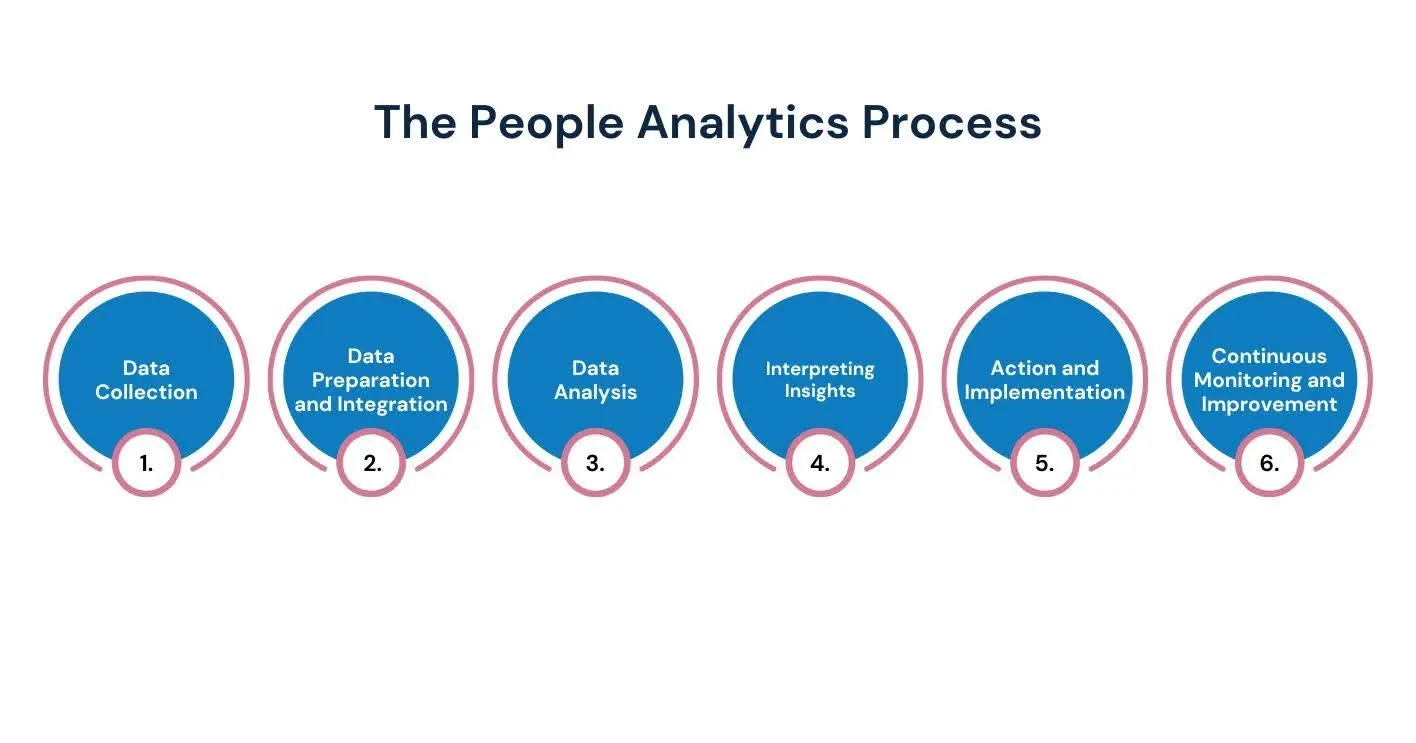
Below, we will outline the typical steps in the People Analytics process, ensuring that you understand how to collect, analyze, and act on employee data effectively.
The first step in the People Analytics process is gathering the relevant data. This includes qualitative and quantitative information sourced from various platforms and systems. Common sources of data include:
Tip: Ensure that the data you collect is clean, accurate, and relevant to the key questions you want to answer.
Once data is collected, it needs to be cleaned, organized, and integrated into a centralized system. Often, data exists in silos across different platforms (e.g., payroll, performance reviews, engagement surveys), so integrating all this data into one cohesive system is crucial. This step involves:
Tip: Use HR technology platforms like CompUp to centralize and integrate data from various HR systems for easier analysis.
After preparing the data, the next step is compensation analysis. This is where the power of People Analytics truly shines. HR professionals apply statistical techniques and tools to examine trends, correlations, and insights. The goal is to uncover patterns and relationships in the data, such as:
Advanced tools like AI and machine learning can help process large data sets and provide deeper, more accurate insights.
Tip: Use predictive analytics to anticipate future trends, such as turnover rates or employee training needs.
Once the data is analyzed, the next step is interpreting and applying the results to make informed HR decisions. This involves:
Tip: Collaborate with leadership teams to align the insights with broader business goals and ensure that decisions are not just data-driven but also strategically aligned.
Suggested Read: Understanding Job Leveling in the Workplace with Examples and Criteria
After gathering insights, the next step is translating those insights into action. This involves applying the data to inform HR practices such as:
Tip: Regularly monitor the implementation of these actions and track their effectiveness to ensure they are delivering the desired results.
People Analytics is not a one-time process; it’s an ongoing cycle. Once actions are implemented, continuous monitoring is key to ensuring that HR strategies are working effectively and providing the desired outcomes. This step involves:
Tip: Regularly update your analytics strategy to reflect changes in business goals, technology, or employee needs.
Key metrics in People Analytics help HR teams assess employee performance, engagement, and retention, leading to informed decision-making. Let’s explore the most impactful metrics shaping modern HR strategies in the next section.
Suggested Watch: Best Practices for Getting Maximum Value from People Analytics
The right metrics help organizations monitor progress, identify challenges, and refine HR strategies to better align with business goals. Here are some of the most important metrics HR professionals should focus on in People Analytics:
CompUp enhances this process by integrating key compensation metrics, aligning pay structures with workforce analytics, and supporting informed HR strategies. Let’s explore how CompUp strengthens People Analytics and drives HR success.
Suggested Read: Modern Compensation Strategy and Best Practices
CompUp integrates with People Analytics, providing HR teams with data-driven insights to optimize compensation strategies, workforce engagement, and retention. Here’s how its key features contribute to smarter HR decision-making:
These features help HR teams utilize the data effectively. It makes sure that pay structures are optimized, fair, and aligned with organizational goals. Powerful analytics tools, customizable dashboards, and easy integrations allow HR teams to track key metrics.
People Analytics is rapidly transforming how HR professionals manage and optimize their workforce. By employing data-driven insights, HR teams can improve recruitment, enhance employee engagement, optimize performance, and drive better business outcomes.
CompUp enhances People Analytics by integrating compensation insights with performance data. Features like Compensation Bands, Pay Equity Analysis, and Compensation Benchmarking provide businesses with the clarity and structure needed to align pay decisions with workforce trends.
Additionally, Rewards Statements provide employees with a transparent view of their total compensation, thereby reinforcing trust and engagement.
Take the next step in optimizing your HR strategy. Schedule a free demo today to explore how CompUp can help you harness People Analytics and refine your compensation planning for long-term workforce success.
1. How to get started with people analytics?
To get started with People Analytics, begin by collecting relevant employee data, setting clear goals, and choosing the right tools and platforms. Focus on key metrics like performance, engagement, and turnover, and ensure data quality and integration across systems.
2. What are the 4 stages of people analytics?
The four stages of People Analytics are:
3. What are the 4 types of HR analytics?
The four types of HR analytics are:
4. What is the process of people analytics?
The process of People Analytics involves collecting relevant employee data, preparing and cleaning that data, analyzing it to identify patterns and trends, and using the insights to drive HR decisions. The process is continuous, with regular monitoring and refinement based on growing needs.
5. Can CompUp assist with predictive analytics?
Yes, CompUp enhances predictive analytics by integrating compensation data with workforce trends. Features like Compensation Benchmarking and Pay Equity Analysis provide data-driven insights, helping HR teams forecast salary adjustments, retention risks, and market shifts.
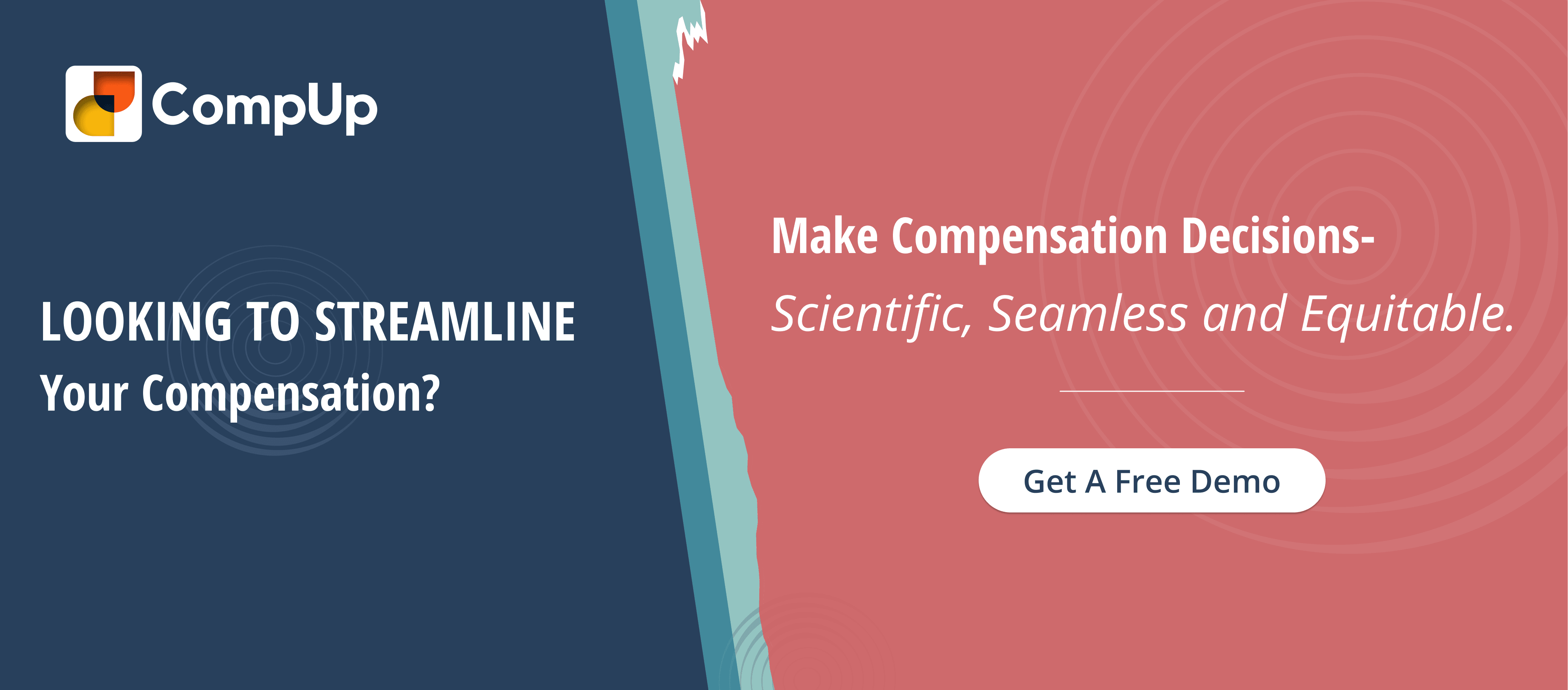
Co-founder & Head of Product
Anshul Mishra, Co-founder and Head of Product at CompUp, blends technology and total rewards to create smart, user-friendly solutions. He focuses on building data-driven tools that help companies design fair and effective compensation strategies, making complex processes simpler and more impactful.
Revolutionizing Pay Strategies: Don't Miss Our Latest Blogs on Compensation Benchmarking